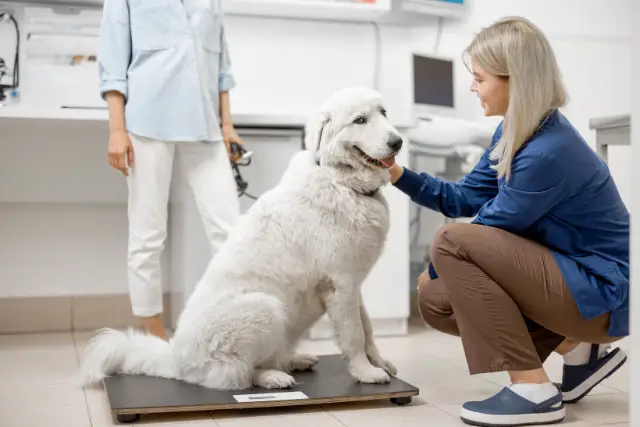Ever heard of the Beta Wolf? They’re the ones right behind the pack’s leader, the Alpha.
But don’t be fooled – these wolves are more than just second in command. They’ve got their own unique and important role.
Think of the Beta Wolf as the pack’s unsung hero. They keep things running smoothly, helping to make decisions and keep the peace. It’s a tough job, but someone’s got to do it!
So, let’s dive into their world. We’re going to explore the life of a Beta Wolf, uncovering the cool and surprising ways they help their pack. Get ready – it’s going to be a fascinating journey!
What Is the Beta Wolf?
When you think of a wolf pack, the alpha male or alpha female might immediately spring to mind as the leaders. However, nestled within the complex structure of the wolf pack is the Beta Wolf.
This wolf is neither the famed leader nor just an ordinary member of the pack. It is unique, possessing qualities distinct from both the alpha and the mid-ranking wolves.
A Beta Wolf typically emerges as the second-in-command. Unlike the alphas, who are often the face of authority and decision-making, Betas have a subtler presence.
What makes them truly stand out is their ability to balance power and diplomacy, often acting as a bridge between the alpha and the rest of the pack.
The Misconceptions Surrounding Beta Wolves
A common myth is that they are simply waiting to overthrow the alpha and take over the pack. In reality, Beta wolves are integral parts of the pack’s cohesion and stability, not power-hungry contenders for the top position.
Another misunderstanding is that they are aggressive enforcers of the alpha’s will. Contrary to this belief, they are more likely to be seen managing relationships and tensions within the pack. Their role is less about enforcement and more about maintaining a balanced and functional group dynamic.
Comparing the Beta Wolf with Other Wolves

In the hierarchy of wolf packs, understanding the distinctions between various roles, including the Beta Wolf, Alpha Wolf, and Omega Wolf, is key to grasping the social dynamics at play.
Alpha Wolves: The Leaders
Alpha wolves, typically consisting of an alpha male and alpha female, are the most dominant wolves in the pack. They are recognized for their leadership roles and often make crucial decisions for the group.
The alpha pair, especially the alpha male, is usually the most visible and assertive member, often leading hunting expeditions or defending the pack from threats.
Beta Wolves: The Middle Ground
The Beta Wolf, by contrast, holds a middle-ground position in this hierarchy. They are not as dominant as the alpha pair but hold a higher status than the rest of the pack.
The role of a Beta Wolf becomes particularly evident when there is a shift in the pack’s structure, such as when an alpha male dies. In such scenarios, the Beta may play a more prominent part in maintaining pack stability.
Omega Wolves: The Submissive Ones
At the opposite end of the spectrum are the Omega wolves. These submissive wolves often occupy the lowest rank. They are typically younger wolves or those that do not exhibit the dominant traits of Alpha or Beta.
The Omega Wolf serves as a social glue in the pack, helping to diffuse tensions and provide a kind of balance.
Other Wolves: The Pack Members
Besides these specific roles, there are other wolves in the pack that do not fall into the alpha, beta, or omega categories.
These wolves have varying levels of submissiveness and dominance and contribute to the pack’s overall functioning in different ways. Their roles can be fluid, changing as they age or as the pack’s dynamics shift.
The Role of Beta Wolves in Wolf Packs
Their role in a wolf pack is both intricate and crucial, significantly influencing the pack’s dynamics and functioning. These wolves occupy a distinct position, interacting closely with the alpha wolf and other pack members in various ways.
Support to the Alpha Wolf
One of the primary roles of a Beta Wolf is providing support to the Alpha Wolf. This support is not just in physical confrontations or hunts but also in the subtle nuances of maintaining pack order.
The Beta often acts as a mediator or a second-in-command, especially in situations where the Alpha Wolf requires assistance in decision-making or enforcing rules within the pack.
Balancing the Pack Dynamics

They also play a vital role in balancing the dynamics between the dominant wolf, like the alpha male or alpha female, and other pack members. They often act as a bridge between the alpha pair and the rest of the wolves, ensuring that the directives of the alpha are understood and followed.
This role is particularly crucial in large packs, where direct control by the alpha pair over every individual may not be feasible.
Maintaining Harmony Among Submissive and Mid-Ranking Wolves
Apart from their interactions with the Alpha Wolf, Beta Wolves also engage significantly with submissive and mid-ranking wolves. They help in diffusing tensions and conflicts among these wolves, ensuring that the pack operates as a cohesive unit.
This role is essential for the overall health and well-being of the wolf pack, as it prevents internal conflicts and maintains social stability.
Role in Hunting and Territory Defense
While the alpha male or alpha female wolf may lead the hunts, Betas are instrumental in strategizing and coordinating efforts, especially in corralling prey or defending against intruders. Their involvement is crucial in successful hunts and in protecting the pack’s territory.
Nurturing and Training Young Wolves
Beta Wolves also contribute to the nurturing and training of young wolves within the pack. They often take part in teaching the pups survival skills, hunting techniques, and social etiquette.
This mentoring role helps in the integration of these young wolves into the pack’s hierarchy, ensuring their growth and development into either dominant or submissive wolves, depending on their innate traits and learned behaviors.
Spotting a Beta Wolf
Identifying a Beta Wolf within a wolf pack can be a fascinating yet challenging task, as their distinguishing characteristics are often more behavioral than physical.
Unlike the more dominant Alpha Wolf or the submissive Omega Wolf, the Beta Wolf’s traits are subtle, making keen observation crucial for accurate identification.
Behavioral Indicators
The behavior of a Beta Wolf is one of the most telling signs. These wolves typically display a blend of confidence and restraint. While they do not exhibit the overt dominance of an Alpha, they carry themselves with an air of authority.
In interactions, a Beta may show respect to the Alpha Wolf through certain gestures, like a lowered head or averted gaze, but will also command respect from other pack members.
Position in the Pack
During pack movements, the Beta Wolf often positions themselves near the Alpha, but not at the forefront. They tend to be involved in decision-making processes or critical activities like territory patrols. Their positioning is strategic, allowing them to observe and participate without overshadowing the Alpha.
Interactions with Pack Members
Observing how other wolves interact with a suspected Beta can be revealing. Submissive and mid-ranking wolves generally show a degree of deference to the Beta, though not as pronounced as towards the Alpha.
The Beta Wolf, in turn, may engage in disciplinary or mediating actions within the pack, but their approach is typically less aggressive than that of the Alpha.
Interestingly, the relationship between a Beta Wolf and the Omega can be particularly telling. The Omega wolf, being the most submissive member of the pack, often acts as a barometer for the social dynamics within the group.
In their interactions with the Omega Wolf, a Beta Wolf may exhibit a blend of firmness and forbearance, demonstrating their role as a mediator and enforcer within the pack, yet doing so with less intensity than the Alpha.
Physical Attributes
While physical characteristics are not the primary indicators of a Beta Wolf, they often possess a healthy and robust physique, necessary for their active role in the pack. Their grooming behavior, maintained by both themselves and other pack members, can also be a clue.
A well-groomed wolf that receives attention from others, yet is not the pack’s leader, might indicate a Beta status.
Vocalizations and Body Language
Vocalizations such as howls and growls can offer hints about a wolf’s rank. A Beta Wolf’s howl may not be as commanding as the Alpha’s, but it carries a certain assertiveness.
Similarly, their body language in group settings – balancing submissiveness to the Alpha with authority over lower-ranking wolves – can point to their Beta status.
Wrapping Up

Beta wolves are not just secondary figures in the shadows of Alpha wolves; they are pivotal players in their own right. Their role in maintaining balance, mediating conflicts, and supporting the Alpha pair underscores their essential contribution to the pack’s overall health and harmony.
Understanding them enriches our knowledge of wolf pack dynamics, revealing a sophisticated social structure where each member plays a critical role. The Beta’s story is a testament to the complexity and intricacy of nature’s systems, a reminder of the delicate balance that sustains the wild.
FAQs
Can a Beta Wolf become an Alpha?
Yes, a Beta Wolf can ascend to Alpha status, especially if they demonstrate leadership qualities and gain the support of the pack following changes like the departure or demise of the current alpha.
How does a Beta Wolf interact with mid-ranking wolves?
A Beta Wolf typically exhibits a balance of authority and approachability with mid-ranking wolves, maintaining order and cohesion within the pack through their interactions.
How does one become a Beta Wolf?
Becoming a Beta Wolf involves a combination of factors including displaying social intelligence, strength, and the ability to contribute effectively to the pack’s well-being, which leads to recognition and respect from other members of the wolf pack.





